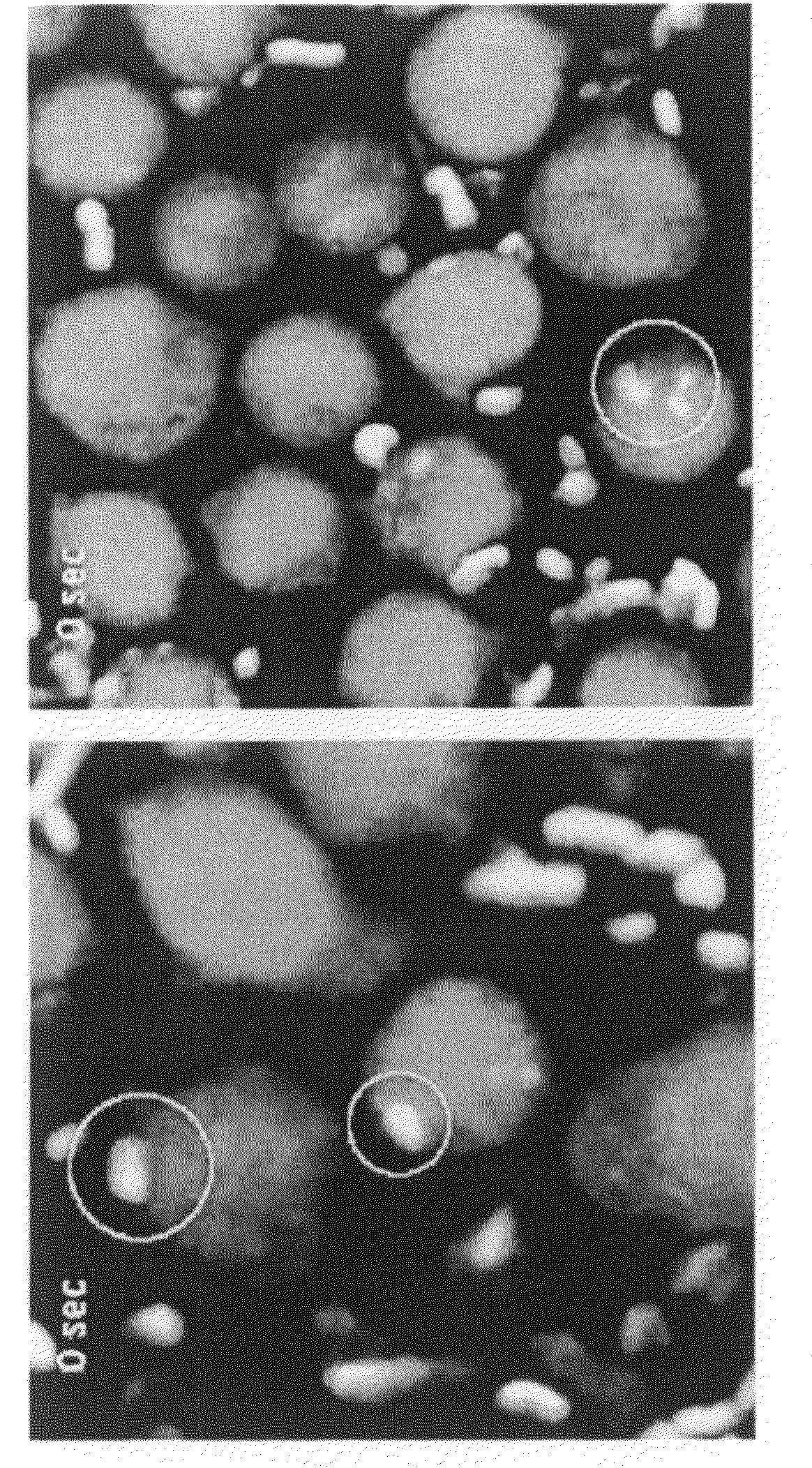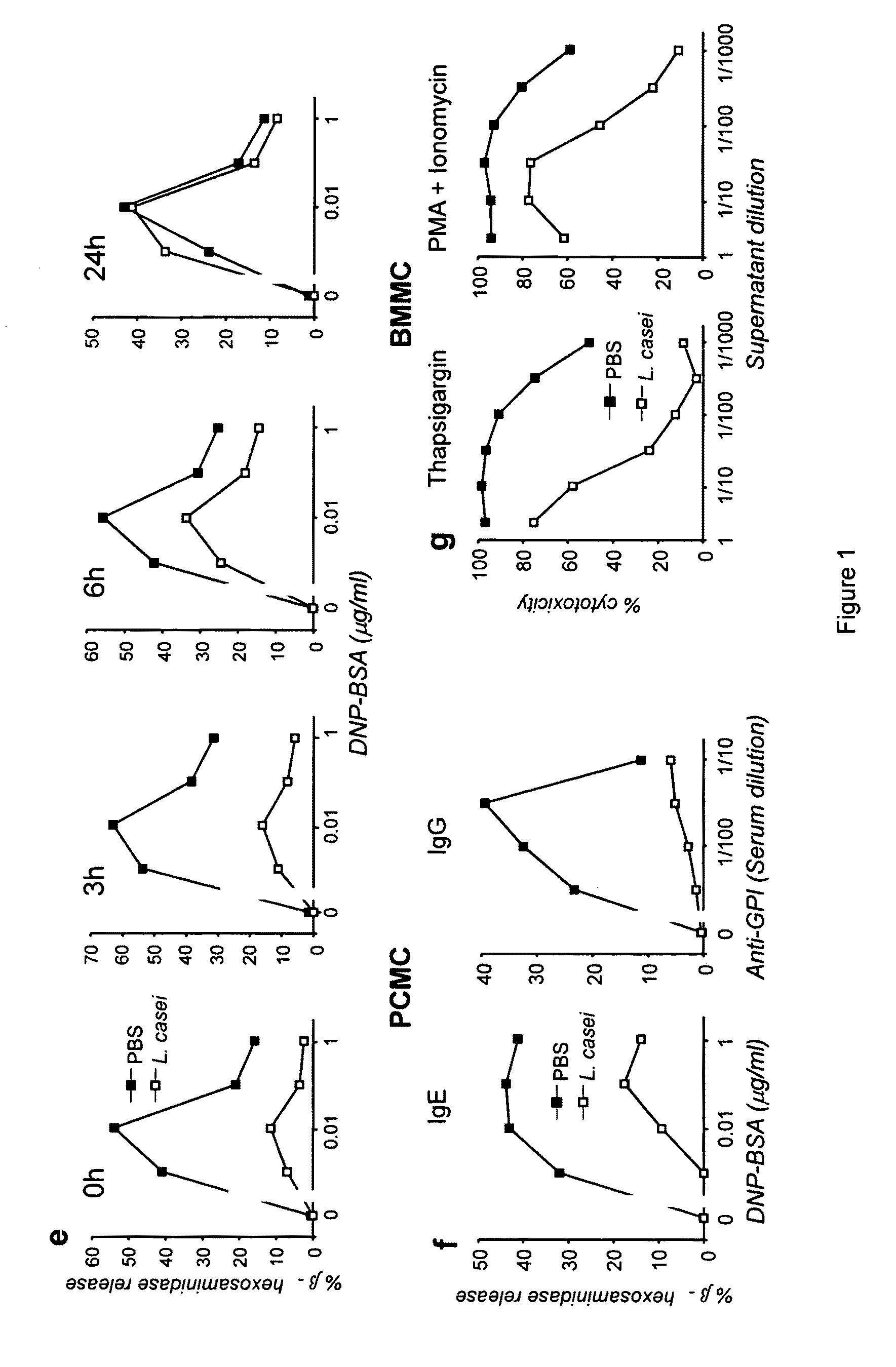Methods for inhibiting mast cell activation and treating mast cell-dependent inflammatory diseases and disorders using lactobacillus
a technology of lactobacillus and mast cell activation, which is applied in the direction of bacteria material medical ingredients, immunological disorders, drug compositions, etc., can solve the problems of allergies or other inflammatory diseases, and achieve the effect of preventing pathogenic immune responses
- Summary
- Abstract
- Description
- Claims
- Application Information
AI Technical Summary
Benefits of technology
Problems solved by technology
Method used
Image
Examples
example 1
L. Casei Inhibits Mast Cell Activation
[0112]When sensitized with IgE antibodies and challenged with antigen, Bone Marrow-derived Mast Cells (BMMC) release granular mediators such as β-hexosaminidase and secrete cytokines such as TNFα. When incubated overnight with L. casei before sensitization with IgE, BMMC released lower percentages of the granular enzyme β-hexosaminidase (2-fold more) and secreted less TNF-A upon antigen challenge (FIG. 1a and FIG. 11A).
[0113]L. casei secretes lactic acid and other metabolites which could possibly account for the observed inhibition. An overnight incubation of BMMC with high concentrations of lactic acid (up to 20 mg / ml), however, did not affect IgE-induced secretory responses (not shown). To determine whether bacteria themselves could inhibit mast cell activation, BMMC were incubated overnight with γ-irradiated L. casei (which do not secrete metabolites) before they were sensitized with IgE. Irradiated L. casei also inhibited IgE-induced β-hexos...
example 2
Inhibition Requires a Contact Between Cells and Bacteria
[0117]Inhibition of mast cell activation depended on the duration of incubation of cells with L. casei. A 1-h incubation with γ-irradiated bacteria was sufficient to induce a detectable inhibition, and inhibition further increased with the duration of incubation (FIG. 1c).
[0118]Inhibition could not be accounted for by cell death as similarly small percentages of BMMC were labeled with annexin V and / or propidium iodide, following an overnight incubation with PBS or with γ-irradiated L. casei (FIG. 1d). In accordance with this observation, inhibition was reversible. β-hexosaminidase release, which was virtually abolished when mast cells were sensitized with IgE and challenged with antigen immediately after the overnight incubation with γ-irradiated bacteria, was partially restored when sensitization and challenge were delayed for 6 h. It was back to normal after 24 h (FIG. 1e).
example 3
L. Casei Interacts with Mast Cells Via an Unknown Receptor
[0122]In an attempt to identify a receptor possibly involved in inhibition of mast cell activation by L. casei, BMMC from various knock-out mice and their littermate controls were studied. These included mice lacking receptors or signaling molecules involved in the recognition of microbial products. L. casei-induced inhibition was unaffected by the deletion of TLR2+4, TLR3, NOD2, or MyD88 (FIG. 2d). It was unaffected either by the deletion of FcγIIB, FcγRIIIA, FcRγ or DAP12 (not shown). L. casei therefore inhibits mast cell activation by interacting, directly and / or via the release of soluble material, with an unknown receptor.
PUM
 Login to View More
Login to View More Abstract
Description
Claims
Application Information
 Login to View More
Login to View More - R&D
- Intellectual Property
- Life Sciences
- Materials
- Tech Scout
- Unparalleled Data Quality
- Higher Quality Content
- 60% Fewer Hallucinations
Browse by: Latest US Patents, China's latest patents, Technical Efficacy Thesaurus, Application Domain, Technology Topic, Popular Technical Reports.
© 2025 PatSnap. All rights reserved.Legal|Privacy policy|Modern Slavery Act Transparency Statement|Sitemap|About US| Contact US: help@patsnap.com



